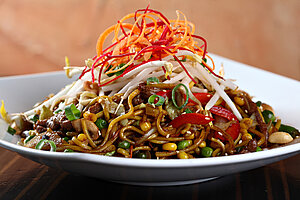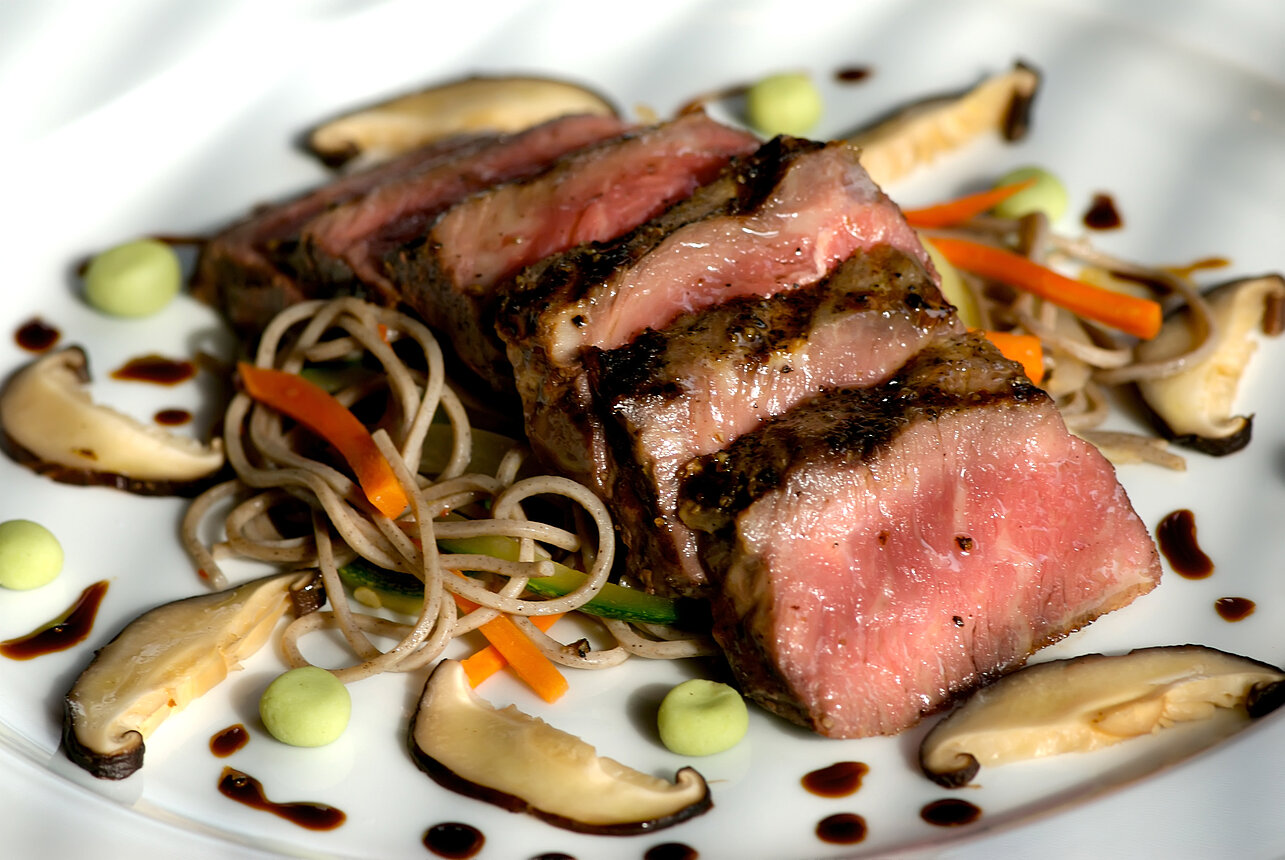Fusion is an interesting departure from traditional cuisine in that it takes two distinctive food categories and mashes them up to create something new.
Typically, fusion is achieved through selecting cuisines that already feature complementary ingredients, flavor profiles, and cooking techniques. Mexican and American fusion, for example, is often delightful (think Tex-Mex).
That said, surprisingly tasty outcomes can occur even when pairing two types of cuisine that seem dissimilar. This is certainly the case with Italian-Japanese fusion. It all starts with a basis in “wafu,” which loosely translates to “Japanese style” when referencing cuisine.
What is wafu, and how does it contribute to a truly confounding and incredibly flavorful fusion when paired with Italian food?
What Is Wafu?
“Wafu” is a term typically used to express the inclusion of traditional Japanese ingredients, flavors, and features in cooking. More specifically, it has to do with incorporating these Japanese tastes and techniques into other food categories.
Wafu became popular in the U.S. thanks to steakhouses utilizing wagyu and Kobe beef, along with traditional preparations.
However, it has expanded significantly, with wafu showing up in a range of world cuisines. Sushi burritos or tacos, for example, pair Japanese ingredients and flavors with Mexican food preparation styles.
Wafu dressings that feature a base of vegetable oil, soy sauce, mirin, and rice vinegar may be paired with any number of other ingredients to add Japanese flavor to a range of cuisines.
While wafu can apply to all kinds of food types, it has become particularly popular as a pairing with European cuisines. Although Italian and Japanese might not seem like a natural fit, Italian dishes are among the easiest and most prolific pairings for wafu, perhaps due to the inclusion of noodles in both types of cooking.
Related: Chaos Cuisine: Enhancing Cultural Cuisine or Diluting It Beyond Recognition?
 Exploring Italian-Japanese Fusion
Exploring Italian-Japanese Fusion
Aside from the use of noodles, the major crossover appeal that both Italian and Japanese cuisines enjoy is a focus on savory, umami flavor profiles. Interestingly, the trend has taken hold in both Italy and Japan, with different but equally appealing results.
In Japan, this fusion cuisine, called itameshi, features dishes like wafu spaghetti with meatballs. This popular menu item rarely features classic Italian tomato-based pasta sauce.
Instead, it’s more likely to pair spaghetti noodles with soy-butter sauces and toppings like wild mushrooms, tarako (pollack roe), and weirdly, ketchup and bacon (the popular Napolitan spaghetti dish).
While this approach to Italian cooking is unexpected, it can also be surprisingly delicious. In Italy, restaurateurs are experimenting with obvious ingredients like shiso leaf, featuring basil and mint flavors, as well as less expected items like yuzu, spicy togarashi seasoning, and soy sauce.
Never miss out on updates! Subscribe Here
Itameshi in America
The trend of pairing Italian and Japanese flavors isn’t limited to the two originating countries.
Italian-Japanese fusion is taking off in the U.S., thanks to chefs like Robbie Felice, who started incorporating wafu at his New Jersey restaurants (Osteria Crescendo and Viaggio Ristorante) and Katsuya Fukushima, who was inspired to develop a corn and pollock roe pizza at his wafu-Italian restaurant in Washington, D.C. (Tonari).
In fact, they’re not the first to explore this type of fusion. Wolfgang Puck was experimenting with Asian fusion as far back as the ‘80s at his Santa Monica eatery, Chinois on Main, and New York’s Basta Pasta has a long tradition of including Japanese flavors in its Italian dishes.
The idea is not to reinvent Italian or Japanese cuisine but to marry the complementary flavor profiles and crossover ingredients that make these two food categories so delectable and beloved by diners. The result is a blended menu that offers the best of both worlds, along with an entirely novel culinary experience.
Contact Our Team today! Reach out to us with your questions.





